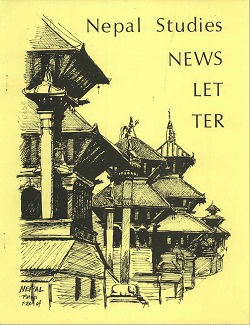Author Biography
Lai Ming Lam is an associate professor in Osaka University and has obtained her PhD in Anthropology from the University of Adelaide, Australia. She has been carrying out research work on the welfare impact of conservation-led displacement on local communities particularly in Nepal since 2002. She is the founder of ‘Future Village Nepal’ and dedicates her life to improving the livelihoods of rural population in past 11 years. When 2015 earthquake serious hit the rural Nepal, her NGO not only provides emergency relief but also implements long-term disaster recovery and reconstruction projects.
Varun Khanna is a scholar with interests in Education, Globalization and Development at the School of Human Sciences of Osaka University, Japan and a European Commission fellow concurrently at Universitat Autònoma de Barcelona, University of Amsterdam and University of Oslo. He is also part of the project panel for The Chance Initiative and Future Village NGO in Nepal. He held other nonprofit positions such as National Vice President of Stonewall Japan, Vice Chair of Foreign Citizens’ City Council at Toyonaka (Osaka), and Global Ambassador of the University of Tokyo.
Rob Kuipers is an undergraduate student at the School of Human Sciences of Osaka University, Japan. He recently did a funded fieldwork on education in post-disaster Nepal and is a part of The Chance Initiative by Future Village NGO.
Abstract
More than two years after the 2015 earthquakes devastated Nepal, Katunge village in Dhading district, Nepal, remained as destroyed as it was right after the earthquake. While the villagers were rather hopeful about rebuilding their houses and lives during the immediate relief effort in which we engaged, one month after the earthquake, now only a few are confident that they will ever rebuild their homes. In this article, we describe the reconstruction progress, followed by a critique of why the reconstruction progress has been so slow. We conclude with reflections on reconstruction challenges interwoven into the context of our NGO experience. During our trips to the region, we have observed and experienced the difficulties people and organizations are facing in the reconstruction process. We interviewed government officials and NGOs that have been involved in reconstruction, which helped us to gain insight into broader perspectives on the community or family-level realities that hinder rebuilding and community revitalization. We conclude that by mobilizing earthquake victims, it is possible to rebuild houses and revitalize communities. Conversely, little progress can be expected in Nepal’s rebuilding as long as poor governance and poor coordination between major reconstruction actors prevails.
Acknowledgements
We wish to acknowledge the financial support provided by Osaka University for this research project. Furthermore, we gratefully appreciate government officials, NGOs workers, scholars to share their disaster relief and recovery experiences with us. Finally, we are very grateful to the many villagers in our research area who shared their views on, and experiences of, hope and hopelessness in post-earthquake time.
Creative Commons License

This work is licensed under a Creative Commons Attribution 4.0 License.
Recommended Citation
Lam, Lai Ming; Khanna, Varun; and Kuipers, Rob. 2017. Disaster Governance and Challenges in a Rural Nepali Community: Notes from Future Village NGO. HIMALAYA 37(2).
Available at:
https://digitalcommons.macalester.edu/himalaya/vol37/iss2/11


